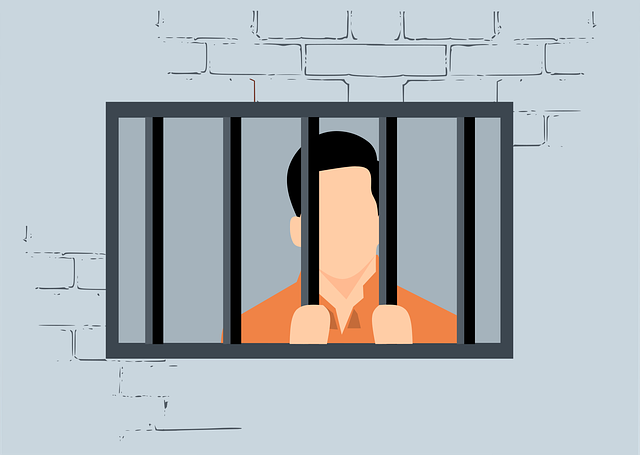Recidivism, a global concern in criminal justice, involves high-risk individuals reoffending after release. Key triggers include unemployment, mental health issues, substance abuse, and peer pressure. Effective recidivism reduction strategies focus on support systems, specialized training, healthcare access, and societal reintegration. Identifying high-risk offenders based on criminal history, demographics, and underlying issues is crucial. Holistic approaches addressing systemic problems like poverty, lack of education, and mental health can empower individuals for long-term success. Community engagement through restorative justice practices, job training, and support networks fosters positive behavior change, reducing recidivism rates. Robust monitoring, aftercare services, and access to resources significantly lower repeat offenses, ultimately aiming to break the cycle of reoffending.
High-risk reoffenders pose a complex challenge for criminal justice systems worldwide. Understanding recidivism—the cycle of reoffending—is crucial in developing effective strategies to break this damaging pattern. This article explores key factors that identify high-risk offenders, delves into successful interventions and support, highlights community engagement programs, and discusses long-term monitoring and aftercare services. By implementing targeted recidivism reduction strategies, we can help high-risk individuals turn their lives around and prevent future crimes.
- Understanding Recidivism: The Cycle of Reoffending
- Identifying High-Risk Offenders: Key Factors
- Effective Interventions and Support Strategies
- Community Engagement and Reintegration Programs
- Long-term Success: Monitoring and Aftercare Services
Understanding Recidivism: The Cycle of Reoffending

Recidivism, or the tendency for individuals to reoffend after being released from prison, is a complex phenomenon that has long been a subject of concern in criminal justice systems worldwide. Understanding this cycle is crucial as it helps identify potential triggers and develop effective strategies to break the repeat offending pattern. The cycle often begins with an individual’s release from incarceration, followed by reintegration into society, which can be challenging due to limited resources, social isolation, or unresolved underlying issues. During this period, various factors may contribute to recidivism, such as lack of employment opportunities, inadequate access to mental health services, substance abuse, and exposure to criminal peer groups.
Recognizing these triggers is the first step in implementing successful recidivism reduction strategies. These strategies focus on providing support systems, offering specialized training and education, facilitating access to healthcare, and creating opportunities for meaningful reintegration into society. By addressing these underlying issues proactively, there’s a greater chance of breaking the cycle of reoffending and helping high-risk individuals lead productive lives post-release.
Identifying High-Risk Offenders: Key Factors

Identifying high-risk offenders is a critical first step in developing effective recidivism reduction strategies. Several key factors come into play when assessing an individual’s potential for reoffending. One significant indicator is their criminal history, including the type and frequency of previous offenses. Patterns of repeated offenses within specific categories, such as violent crimes or property theft, suggest a higher risk of future offending.
Demographic data, such as age, gender, and socioeconomic background, also play a role. Younger offenders and those from disadvantaged backgrounds often face more challenges that can contribute to recidivism. Mental health issues, substance abuse, and lack of access to education or employment opportunities can increase the likelihood of reoffending. Understanding these factors helps in tailoring interventions and support systems to break the cycle of crime and reduce recidivism.
Effective Interventions and Support Strategies

Breaking the cycle of recidivism requires a multifaceted approach, focusing on both individual and systemic changes. Effective interventions should aim to address the root causes of criminal behavior, such as poverty, lack of education, mental health issues, or substance abuse. By providing comprehensive support strategies, including access to quality education, vocational training, therapy, and addiction treatment, high-risk reoffenders can gain essential tools for long-term success.
Recidivism reduction strategies should also involve community engagement and collaboration. Restorative justice practices, victim-offender dialogue, and reintegration programs can help individuals take responsibility for their actions while fostering a sense of accountability and community support. These approaches not only reduce the likelihood of future offenses but also contribute to rebuilding trust and strengthening social connections.
Community Engagement and Reintegration Programs

Community engagement and reintegration programs play a pivotal role in breaking the cycle of high-risk reoffenders. These initiatives focus on reintegrating individuals back into society, fostering a sense of belonging, and providing support structures that promote positive behavior change. By involving local communities, these programs can help reduce recidivism rates by addressing underlying social issues and offering opportunities for employment, education, and rehabilitation.
Effective community engagement strategies involve partnership with local organizations, such as churches, non-profits, and businesses. These partnerships facilitate access to resources like job training, mental health services, and housing assistance, which are crucial components of successful reintegration. Additionally, community support networks can help ex-offenders navigate societal challenges, build a positive reputation, and eventually become productive members of society, further contributing to recidivism reduction strategies.
Long-term Success: Monitoring and Aftercare Services

Breaking the cycle of recidivism requires comprehensive strategies that extend beyond the initial incarceration. One key aspect in achieving long-term success is implementing robust monitoring and aftercare services for high-risk reoffenders. These programs aim to support individuals as they reintegrate into society, providing them with the necessary tools and resources to stay on a positive path. By offering ongoing supervision, mental health support, job training, and access to social networks, recidivism reduction strategies can significantly lower the chances of repeat offenses.
Effective monitoring involves regular check-ins with parole officers, random drug testing, and participation in therapy sessions designed to address underlying behavioral issues. Aftercare services further strengthen this process by connecting ex-offenders with employment opportunities, housing assistance, and community resources. This holistic approach ensures that individuals have the means to maintain stability, avoid triggers for criminal behavior, and build a fulfilling life outside of crime, thereby reducing recidivism rates and fostering positive change in their lives.
Breaking the cycle of recidivism requires a multifaceted approach. By identifying high-risk offenders, implementing effective interventions, fostering community engagement, and providing robust aftercare services, we can significantly reduce recidivism rates. These strategies not only empower individuals to turn their lives around but also contribute to safer communities. Through dedicated support and holistic programs, it’s possible to disrupt the cycle of reoffending, offering a brighter future for both ex-offenders and society at large.






